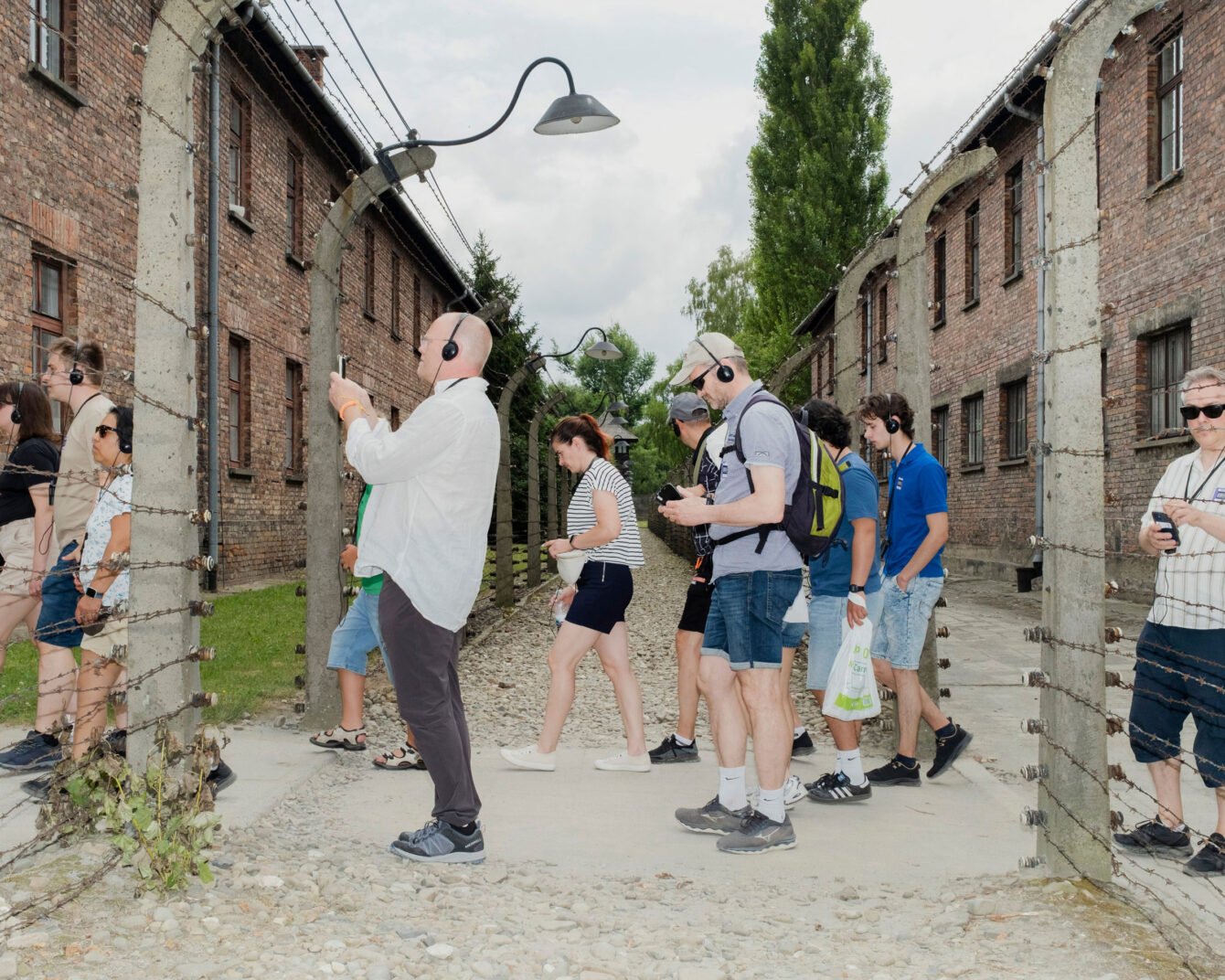
A tour group at the Auschwitz-Birkenau State Museum in Oświȩcim. All photographs from Poland, July 2024, by Rafał Milach for Harper’s Magazine © The artist/Magnum Photos

A tour group at the Auschwitz-Birkenau State Museum in Oświȩcim. All photographs from Poland, July 2024, by Rafał Milach for Harper’s Magazine © The artist/Magnum Photos